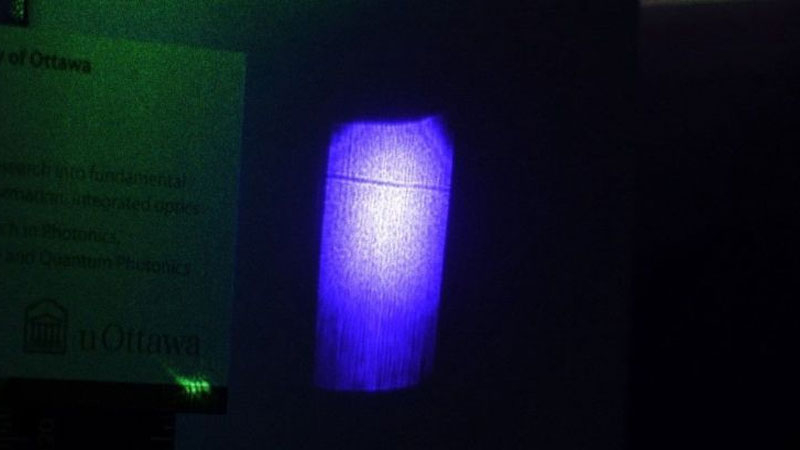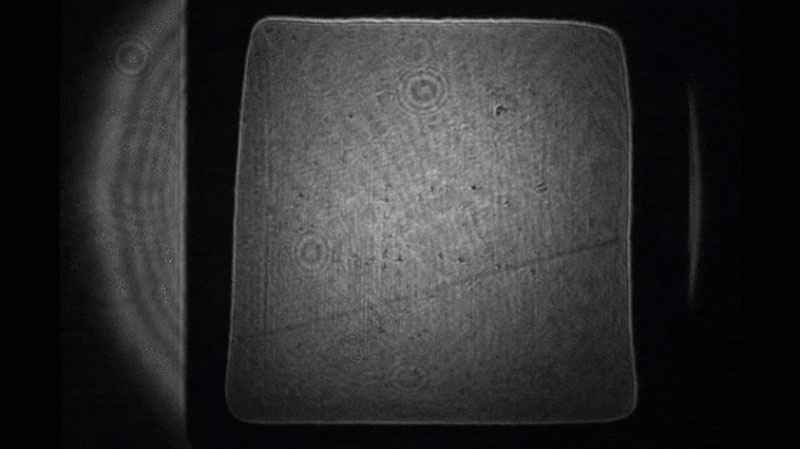A laser beam can cast a shadow, scientists have found


The imperfection of a 3D simulator of nonlinear optical phenomena in materials, which in the program created a shadow from a digital image of a laser beam, made scientists think about an experiment that would allow a real laser beam to cast a shadow. Under normal conditions, this never happens – luminous objects and phenomena do not create shadows. But a unique experiment did the impossible, and for the first time a laser beam acquired its own shadow.


Shadow on the wall of a ruby from a green laser. Image source: Raphael A. Abrahao
A scientific paper on the discovery has been accepted for publication in the peer-reviewed journal Optica. The experiment was carried out by scientists from the US Brookhaven National Laboratory (BNL). The experiment became part of a broader project to study the nonlinear optical properties of materials.
«A laser beam casting a shadow was previously considered impossible because light typically passes through another light source without interacting, said research team leader Raphael A. Abrahao. “Our demonstration of a highly counterintuitive optical effect encourages us to reconsider our understanding of shadow.”


Laser shadow on screen
To set up the experiment, the scientists shined a green laser beam on one side of a ruby cube (a material popular for laser experiments). An intense blue laser light was directed to the other side of the cube perpendicular to the green beam. After this, a shadow from the green laser appeared on the opposite side of the ruby cube illuminated by the blue laser. It was a real shadow: it slid across the screen following the movement of the green ray, repeating all the curves of the screen.
Experimental setup diagram
As the scientists explained, the green laser changed the local properties of ruby, increasing the absorption of the blue laser in such areas (it excited electrons in the ruby atoms that were “getting in the way” of the blue laser with a shorter wavelength).
«Our understanding of shadows has evolved hand in hand with our understanding of light and optics,” explains Abrajao. “This new discovery could be useful in a variety of applications, such as optical switching, devices in which light controls the presence of another light source, or technologies that require precise control of light transmission associated with high-power lasers.”
Recent Posts
Cisco’s quarterly results and outlook beat Wall Street expectations
Cisco Systems, an American supplier of enterprise networking equipment, announced results for the third quarter…
Amazon boasts of hundreds of thousands of Alexa+ users, but no one has seen them
Amazon claims that hundreds of thousands of users have already gained access to its updated…
Nvidia accidentally reveals GPU specs for desktop AI supercomputer DGX Spark
Nvidia hasn't yet revealed the specs of its upcoming GB10 desktop AI supercomputer chip, but…
Ryzen 9 9950X3D Review: A CPU for Everything
AMD processors with additional 3D cache have been considered the best choice for gaming PCs…
Scientists have increased the efficiency of thermonuclear fusion by another 2.7 times with a positive energy yield
The world's only positive fusion experiment has improved its results. Scientists at the National Ignition…
TSMC to open nine new fabs instead of five this year due to skyrocketing demand for AI chips
Taiwan's TSMC has announced plans to build nine new advanced fabs this year — eight…